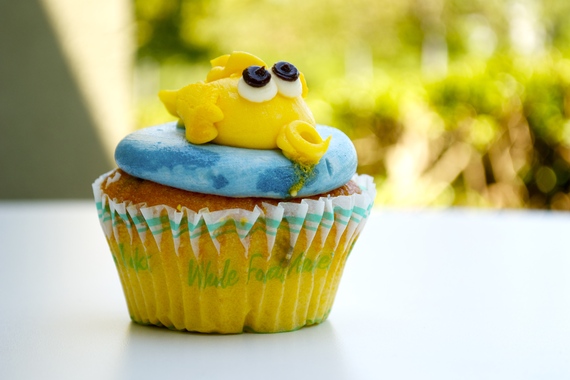Do you ever feel frustrated or out-of-control about your eating?
Like once you buy Nutella or cereal, the jar or box is gone in a day?
Like you just wish you could be one of those people who doesn't have to worry about her eating, and can be a healthy weight without eating?
If so, this is for you:
This article is about emotional pain, and eating.
I know, I know. You might not want to read an article about pain. You might be thinking I should go read another article about nutrition advice. But bear with me.
By "pain," I mean any uncomfortable feeling. I mean frustration, anxiety, nervousness, boredom, loneliness, and more -- any feeling that we just don't want to feel.
When I ask my clients to think about kind of pain they were feeling right now, they resist, too.
If I let myself feel that pain, I would lose myself inside of it, they tell me.
If I let myself feel that pain, I'll never stop feeling it. I'll be depressed again, and I just can't do that.
My pain is never-ending and all-encompassing.
And look, I absolutely get that knee jerk reaction of fear at the enormity of our pain, that desire not to look at unpleasant feelings because we're afraid that they will overwhelm us.
But the really life-changing work around our eating comes when we are willing to face those feelings anyway.
Why? Because every time we eat when we're not hungry, every time we choose food that doesn't make us feel good, every time we eat past fullness, we're avoiding something.
We're avoiding pain.
Even if you are skimming this article and thinking, yeah, I don't feel that kind of pain. I just want to get to the practical tips! -- you too, my dear friend, are probably avoiding pain.
How do I know? Because every time I work with a client one-on-one or in groups, I tell start by giving each person one, very simple guideline: Only eat when you're hungry. I tell them that they can eat anytime they are hungry, but that if they aren't hungry, they shouldn't eat.
They nod their heads, fully confident that eating only when they are hungry will be easy-peasy.
And then they come back a week later, and tell me that implementing such an incredibly simple task was way more difficult than they expected. They tell me that every time they tried to not eat when they weren't hungry, they felt like they might explode.
And that, my dear friends, is pain.
That extreme discomfort that we feel when we don't use food to "fill up the empty spaces" (as Geneen Roth says)... that is pain.
When I talk to potential clients, one of the first things I tell them is that this work is really hard, but it's hard in a completely different way that most diets are hard.
Most diets are hard because they require you to give up certain foods, or be hungry.
This work is hard because it requires you to face painful truths.
And painful truths are, well, painful.
It could be that you are in pain about relatives that are sick, or people you care about who don't care about you, or about uncertainty in your job or personal life. It could be that you are in pain because you are frustrated or bored. Or it could be that you are in pain for no particular reason. Your life could be completely perfect, but pain just bubbles up sometimes because you are a human and you have a body that feels.
So my challenge for you this week, as terrible as it might sound, is to invite the pain into your life.
Because it's already there. It's there anyway.
You've just been using your relationship with food as a smoke screen, to deny that it's there.
And if you look at the pain, then you can realize that it's not as scary as you thought.
Then you can do something about it. Then you can stop eating as a way of avoiding it.
Once we know how to look at and deal with our pain effectively, everything else is a piece of cake. It is effortless to eat when we are hungry, choose foods that make us feel good, and stop when we are full.
I mean it.
Of course, all this talk about pain can be easier said than done, so I want to give you something really practical to implement. Try this daily for the next week, if you're willing to be amazed:
- Each day, ask yourself, "What pain am I feeling right now?" Remember, pain can be frustration, sadness, loneliness, anxiety.
And if these two steps seem absolutely too scary, here's an alternative:
Each day, ask yourself, "Why am I avoiding pain today?" And be genuinely curious for a unique answer.
Is it because you're afraid you might explode? Because you would never get anything done and cry for the next 8 hours? Because you don't feel anything at all? Are any of those reasons true?
I'd be very interested in knowing what you hear. Does it scare you to think about directly confronting your "pain"? Have you ever tried it? How did it go? How do your feelings about food change when you feel it?
If you'd like to join the conversation, answer these questions in the comments below and I will support you and cheer you on.
----
Are you used to "having it together" in your life, but your eating + weight is the little piece that's not going right? Check out Katie's free "What's Your Eating Style" ebook -- a beautiful, 22-page ebook that lets you identify your eating archetype, and offers detailed, personalized practices to try TODAY.
If you're struggling with an eating disorder, call the National Eating Disorder Association hotline at 1-800-931-2237.
